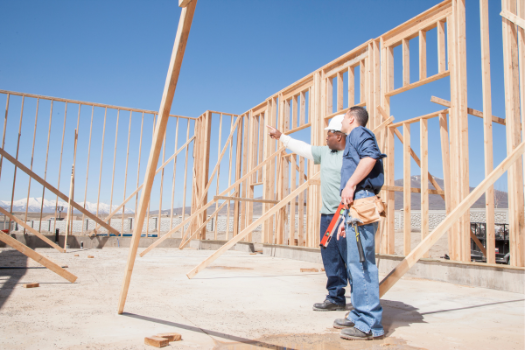
Budgeting with Fixed-Price vs. Cost-Plus Agreements
Budgeting is one of the most important parts of any construction job. It’s what keeps projects running on time and within limits. But not all contracts treat budgeting the same way. That’s where fixed-price and cost-plus agreements come in.
These are two of the most common types of contracts in construction. Each one affects how you plan, spend, and track your budget. Choosing the wrong one can cause stress, confusion, and money problems. Choosing the right one can make things run smoothly.
In this article, we’ll break down what each agreement really means. You’ll learn the pros and cons of each and how they impact your budget. Whether you’re a contractor or a project owner, this guide will help you make smarter decisions from the start.
Let’s take a closer look at how these contracts work—and why it matters.

Understanding Fixed-Price Agreements
A fixed-price agreement sets one total price for the full project. That price stays the same, no matter what the actual costs are. It’s agreed on before the work begins.
This type of contract gives project owners peace of mind. They know exactly what they’ll pay. That makes it easier to budget and plan. Contractors take on more risk, though. If material prices go up or if the job takes longer, the contractor still has to finish it at the agreed price.
Pros:
- Easy to manage
- Predictable costs
- Less paperwork and billing
 Cons:
Cons:
- Less flexible if changes come up
- Contractors may build in extra “padding” to cover risk
- May limit quality if profit margins shrink
Fixed-price agreements work best for jobs with clear plans and few surprises. If you know exactly what the scope is, this can be a smart and simple way to budget.
Understanding Cost-Plus Agreements
A cost-plus agreement means the owner pays for all project costs, plus a fee or percentage for the contractor’s profit. That fee is agreed on upfront.
This contract offers more flexibility. If something changes or new work comes up, the contractor can adjust without renegotiating the whole deal. But for owners, it can be hard to stick to a budget. Costs can rise quickly if the project isn’t tightly managed.
Pros:
- Flexible to changes and updates
- Transparent on where the money goes
- Can lead to better quality since cutting corners isn’t needed
Cons:
- Budget is harder to control
- Requires detailed tracking of every expense
- Can lead to disputes if trust isn’t there
This type of contract works well when the project scope is uncertain. It also helps when changes are likely or when high-quality materials or craftsmanship are a must. But both sides need to communicate often and keep records clear.
Comparing Fixed-Price and Cost-Plus Agreements
Now let’s look at how these two contract types stack up side-by-side.
Risk: Fixed-price puts the risk on the contractor. If costs go up, they pay. Cost-plus shifts more risk to the owner, since final costs can grow.
Cost Predictability: Fixed-price offers a set number. You know the total from the start. Cost-plus is more open-ended. It’s harder to plan for a final total.
Flexibility: Cost-plus wins here. It allows changes and upgrades along the way. Fixed-price is less flexible. Change orders are harder and may delay the job.

Admin Work: Fixed-price is simpler to manage. Fewer invoices and records are needed. Cost-plus requires tracking every receipt, time log, and material cost.
Each contract has trade-offs. The best choice depends on your project’s size, complexity, and how much room you have to adjust your budget along the way.
Choosing the Right Contract for Your Project
Not sure which agreement to use? Start with your project scope.
If the plan is clear and unlikely to change, go with a fixed-price contract. It’s cleaner and easier to budget. It also helps avoid back-and-forth with billing and costs.
If your project has unknowns or room to evolve, a cost-plus agreement may be better. It gives flexibility but needs strong tracking and trust between both parties.

Also, think about your team. A fixed-price job may be easier for newer teams. A cost-plus deal works better if you have experience managing costs and paperwork.
Still unsure? Ask a construction pro to help review your plan. They can guide you based on your goals, budget, and how much risk you want to take.
Conclusion
Fixed-price and cost-plus agreements both have their place in construction. The key is knowing which one fits your project best.
Fixed-price gives you a solid number and is great for simple, clear jobs. Cost-plus offers more freedom but comes with more moving parts.
There’s no one-size-fits-all answer. But if you take the time to understand how each works, you’ll set your project up for success.
Choose smart. Plan ahead. And always match your contract type to your goals, your team, and your budget.